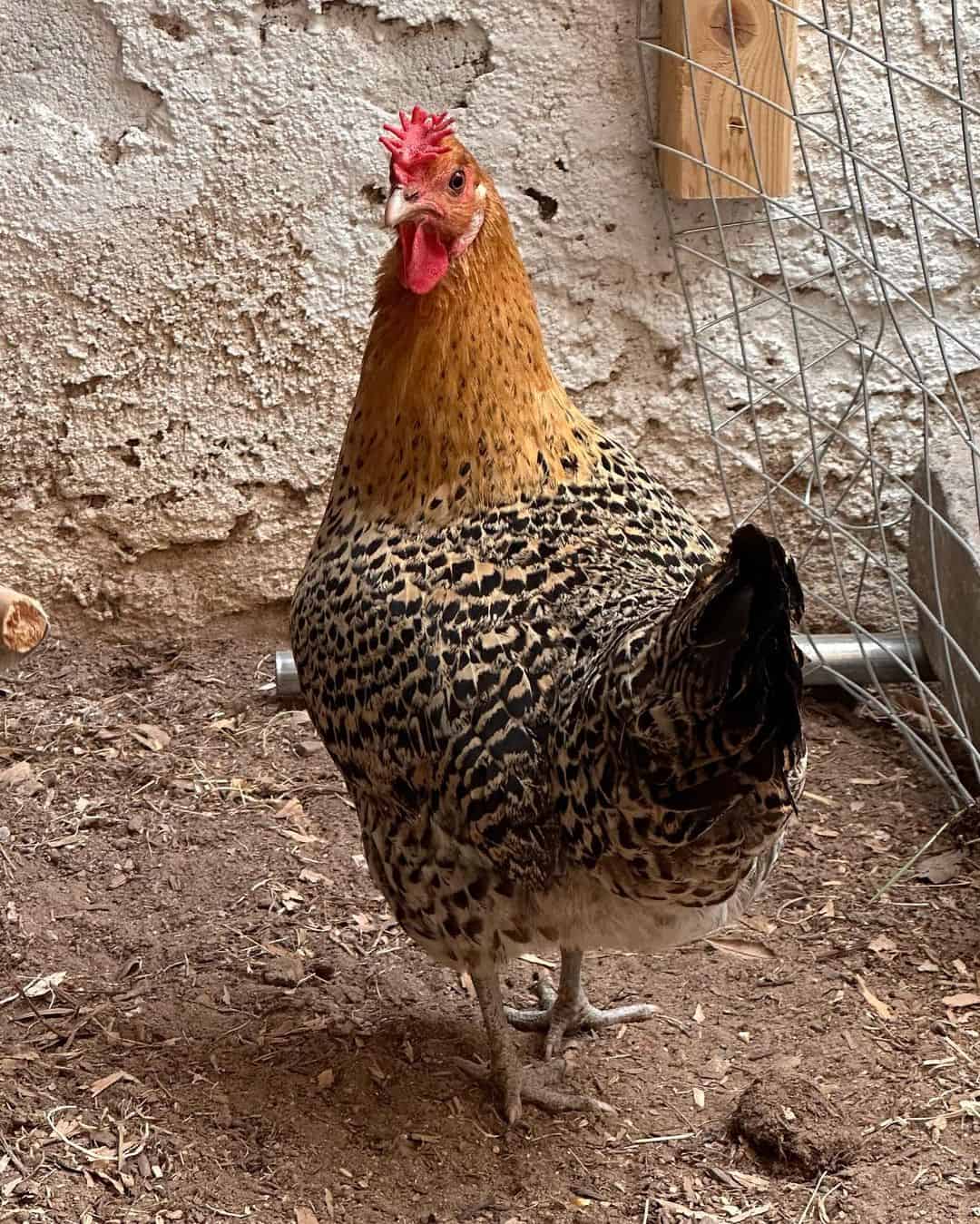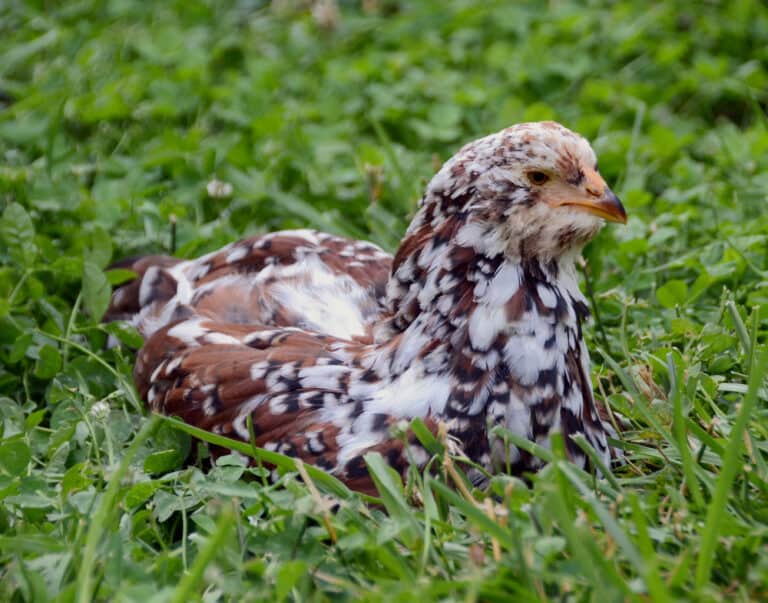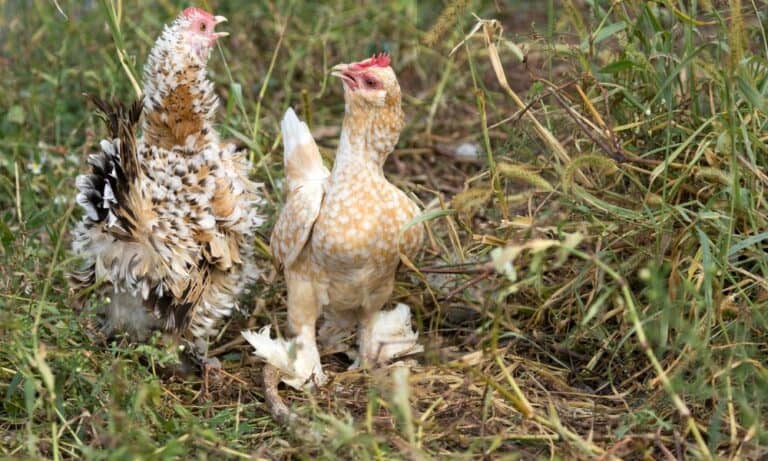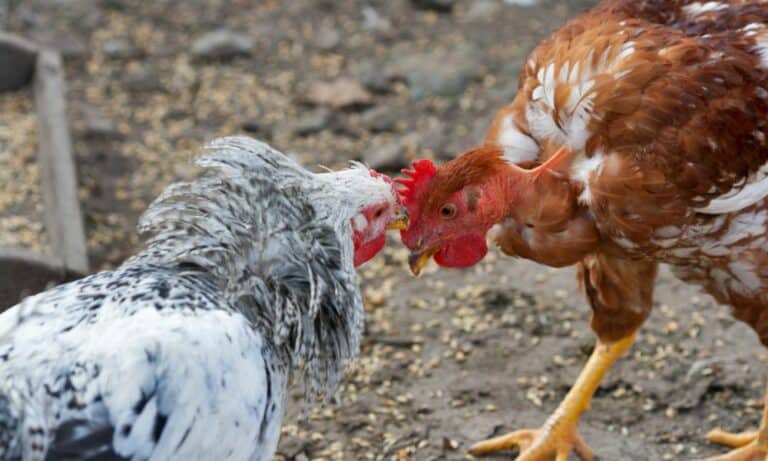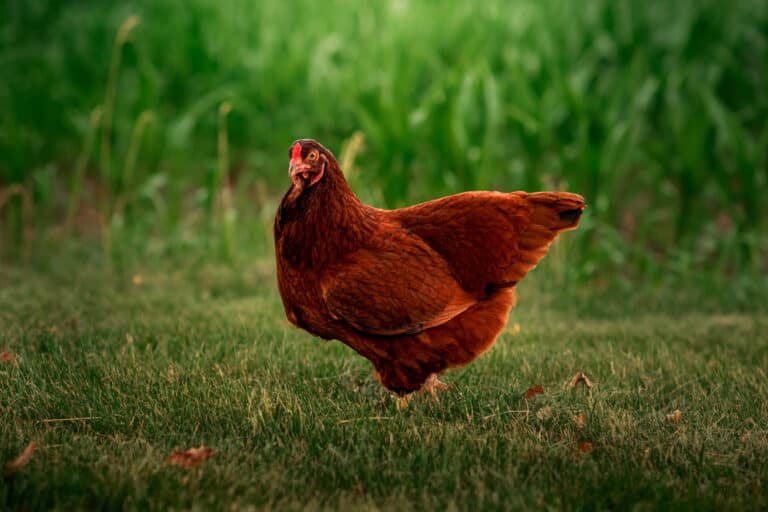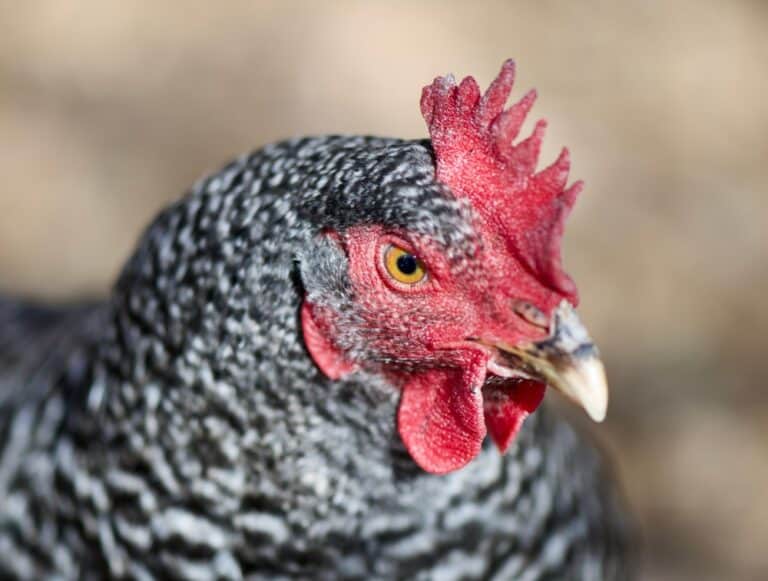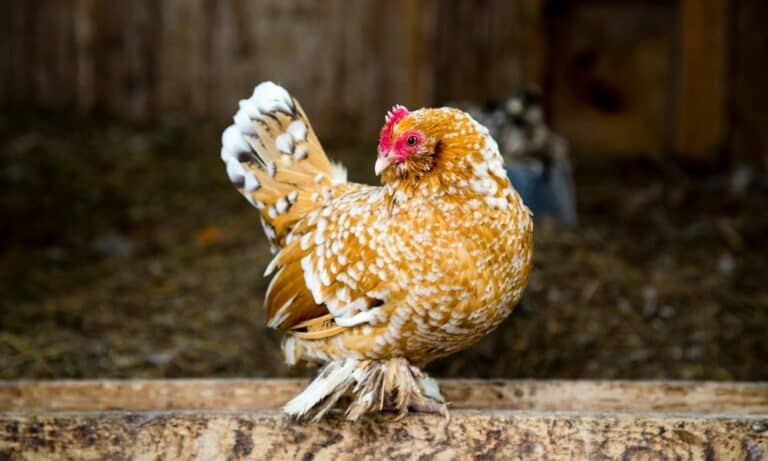Have you heard about the highly sought-after Sicilian buttercup chicken? Its current status is Watch on the Livestock Conservancy.
This means that it is limited in numbers and is found in some geographical locations. Perhaps, you can understand why this ornamental breed has so much hype amongst chicken breeders.
But what’s more to Sicilian buttercup chicken than its rarity? Does it have any special physical or production characteristics? Let’s find out together in the post below!
Where Did the Sicilian Buttercup Come From?
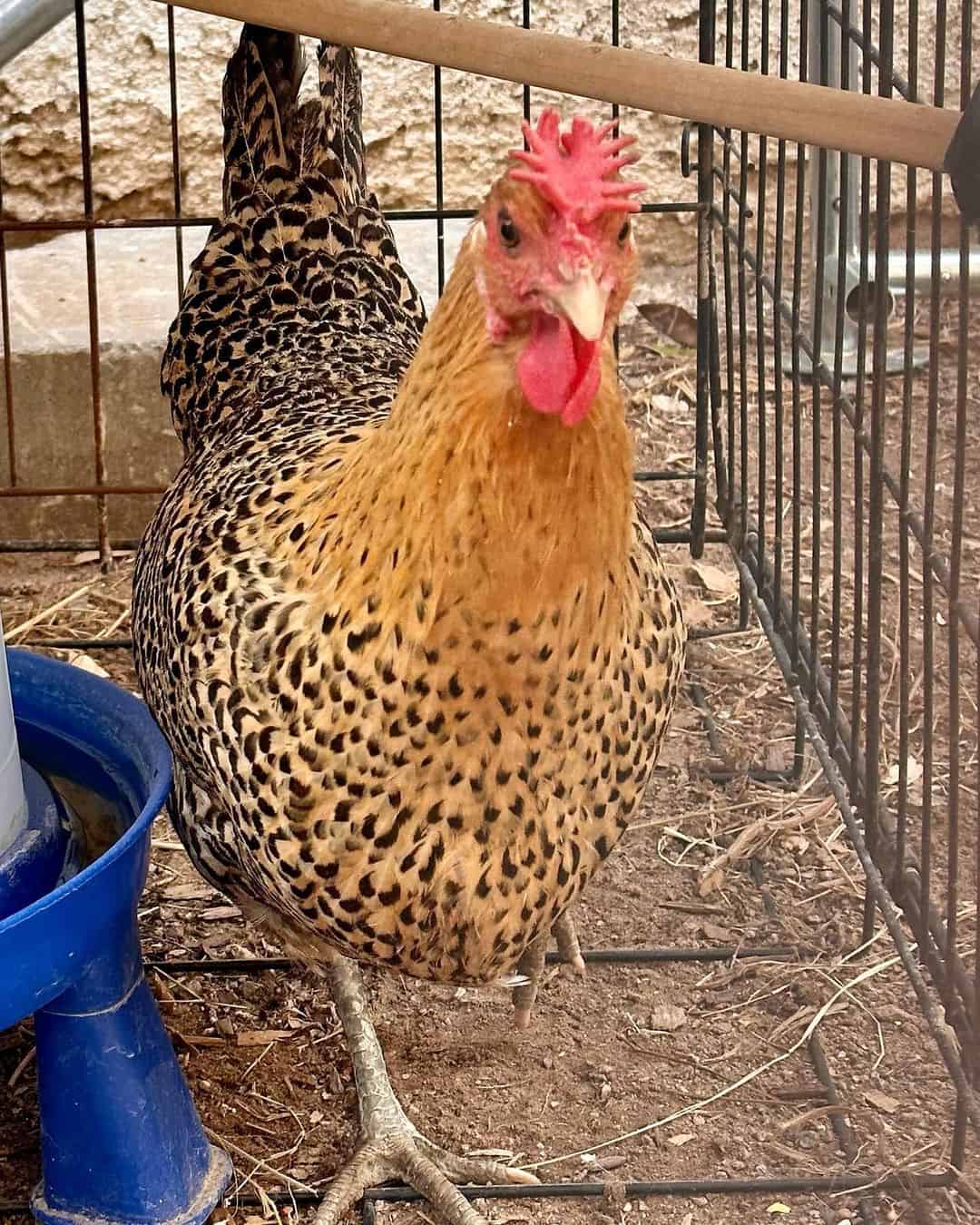
As the name suggests, the Sicilian Buttercup Chicken has its roots in the Island of Sicily. It is one of the largest Italian islands that provides access to the Mediterranean warm waters. The island is also a hub of exotic beaches and archaeological sites.
Around 53 chicken breeds have originated from Italy. So, it doesn’t come off as a surprise to know Sicily has an ancient history of chicken breeding. The farmers primarily bred chickens for meat and eggs – not for developing new breeds.
However, most of the Sicilian chickens have green legs and Buttercup-style comb. These characteristics are also present in the Sicilian Buttercup Chicken and prove the relation of the breed to Sicily Island.
We still don’t know why and how the breed was developed, but one thing is certain; Sicilian Buttercup Chicken originated from Sicily Island.
In 1835, a sea captain added some of the Sicilian Buttercup chickens to his voyage. His motive was to provide his crew members with fresh meat during the long journey to the US. But, to his surprise, the Sicilian Buttercups also offered large white eggs.
Their friendly personality made them good pets too. So, when the crew landed in the United States, they happily introduced this useful chicken breed to the people over there.
Following this, more Sicilian Buttercup chickens were imported to America. People started extensive breeding of these chickens for both meat and egg production. By 1912, the first American Buttercup Club was formed with 200 members.
In 1918, the American Poultry Association’s Standard of Perfection recognized the Sicilian Buttercup Chicken. People experimented with the chicken breed throughout the mid-1900s. Soon, the Bantam Sicilian Buttercup Chicken was introduced.
This version had the exact same characteristics except for the size. Bantam Sicilian Buttercup chickens are one-quarter of the original breed in size. The American Standard of Perfection accepted this version in 1960.
Unfortunately, the Sicilian Buttercup chickens saw their downfall in the 20th century. New Mediterranean breeds with better egg-laying capabilities were being introduced in the US. This meant the Sicilian Buttercup was no longer useful.
People primarily used them for meat, and this led to a near-extinction situation. The Livestock Conservancy listed them as Critical on their website.
However, in the last few years, people have started taking an interest in the breed again. You can find several hobbyist breeders raising Sicilian Buttercup Chickens. Livestock Conservancy has also updated the breed status to Watch.
Do Sicilian Buttercups have a link to North Africa?
Nobody is sure whether Sicilian Buttercups trace back to North Africa. It is said that the Arabs, who traveled through the Mediterranean Sea, brought some North African chickens to Sicily Island. These chickens were bred with Italian Sicilian chickens to produce the modern Buttercup.
What Do Sicilian Buttercup Chickens Look Like?
Sicilian Buttercups have a beautiful, majestic appearance. These birds have 3 distinct characteristics:
1. Buttercup Comb
The comb of the Sicilian Buttercup chickens is the most unique feature of the breed. No other breeds of chickens have this style of crown.
It is shaped like a cup with lots of medium points surrounding the empty center. This gives an interestingly fancy yet royal look. It’s why members of the American Buttercup Club prefer to call Sicilian Buttercups the Crown of the Fancy.
Some people also compare the cup-shaped comb to a flower. The cup looks like the pistil, whereas the regular points appear to be the flower petals. Following this comparison, you may even come across the name Sicilian Flowerbird.
2. Buttery Gold Plumage
Sicilian Buttercups are medium-sized birds with long bodies and deep abdomens. However, what interests the breeders is their color pattern.
The hens have the prettiest pattern with butter gold feathers and tiny black dots. Their dots aren’t perfectly circular but a little bit stretched from different angles (also called black spangles). This gives the plumage of each Sicilian Buttercup hen a unique look.
However, the roosters have a typical orange-red plumage. There are no markings or patterns like the females.
The only differences between a Sicilian Buttercup rooster and a regular red rooster are:
- All Sicilian Buttercups have the famous cup-shaped crown.
- The feathers of the hackle and saddle are brighter than the rest of the body.
- The presence of a greenish-black tail.
While this doesn’t make the Sicilian rooster as impressive as the hen, this huge difference in looks has its advantage. Breeders can easily tell the male chicks apart from female chicks!
Learn more about sexual dimorphism here.
3. Green legs
The green legs of Sicilian Buttercup chickens are linked to their skin color. Chickens have two skin tones; white and yellow.
Birds, who are primarily bred for their meat, have white skin. Meanwhile, the ones bred for egg production have yellow skin. Since Sicilian Buttercups were first developed for their eggs, they belong to the latter category.
Their yellow skin tone combines with the dark blue under-layer of the legs to produce a distinctive green color. If they had white skin, there would have been no color-changing effect, and their legs would have been blue!
Are Sicilian Buttercup Chickens Friendly?

The Sicilian Buttercups aren’t known to be friendly, but they aren’t known to be hostile either. In fact, their behavior greatly depends on how they have been treated in the past.
If your Sicilian Buttercup chickens were brought from an unkind or detached breeding farm, the chances of your chickens being avoidant are high. They will stay cautious of human activity and will try not to get too close.
However, if you got the breed from a good home, they can become great house chickens. Most people raise them in their backyards and report a sweet temperament.
With that said, you shouldn’t allow children near Sicilian Buttercups. These chickens have an active and adventurous nature. They love to keep themselves busy by exploring new places, scavenging, and chatting.
They can also be flighty under stress. This means screeching and running while fluttering their wings. So, if your chicken is newly bought, it can become stressed and scare away your kids.
Interesting Personality Characteristics of Sicilian Buttercups:
- Sicilian Buttercup chickens don’t like confinement. Their need to explore and free range means they require spacious coops to be happy.
- These chickens are generally friendly with other breeds. They won’t fight or try to dominate others in a mixed-breed flock.
- Sicilian Buttercup roosters are known to be gentlemen. They don’t display typical aggressive behavior. Unlike roosters of any breed, they only use their strength in times of need. Their attitude towards females is particularly kind and attentive.
- The Sicilian Buttercups are very noisy and chatty. But they are not loud. Their voice is described as a musical trill instead of a cackle.
- They are heat-hardy, which means you can raise them in hot climates without issues. Sicilian Buttercup chickens can also survive extreme coldness, but it’s best not to expose them to such temperatures. Their average mortality rate is 5 to 8 years. This is lesser than the usual 10 to 12 years, so you need to be careful.
Are Sicilian Buttercup Chickens Good Layers?

Sicilian Buttercup Chickens gained popularity because of their egg-laying capabilities. So, it won’t be wrong to claim that these birds are excellent layers.
They produce a constant supply of healthy white eggs. Usually, the egg size is large, but if the hens aren’t well-fed, the egg size can be medium to small. There is no colored egg production, even in the Bantam version.
You should expect around 2 to 4 eggs in a week. Of course – the exact number will depend on the chicken’s health and lifestyle. But, on average, you will get about 180 eggs per year.
What’s more, the Sicilian Buttercup hens mature much earlier than other breeds. A female Buttercup hen will lay its first egg between 5 to 8 months of age. Their egg-laying cycle will become perfect in 10 months.
However, please note that these chickens aren’t broody. This means they will not sit on their eggs after laying. While it makes egg collecting easy, it can be difficult to continue breeding and hatch more Sicilian Buttercup chicks.
FAQs
What color eggs do Sicilian buttercups lay?
Sicilian Buttercup chicken eggs are white. They appear just like the regular chicken eggs sold in the markets today. However, the egg size is large.
Are Sicilian Buttercup chickens rare?
Yes, Sicilian Buttercup chickens are rare. They were almost extinct in the late 20th century when more productive breeds were introduced. Livestock Conservancy has currently listed the Sicilian Buttercup chickens on Watch.
Recently, chicken enthusiasts have taken notice of the breed’s status. They are not only farming the breed but also educating others on how to raise it properly.
How much do Sicilian buttercups weigh?
Sicilian buttercups are generally heavy and big. The male roosters weigh around 2.95kg (6.5 lbs), whereas female hens weigh up to 2.50kg (5.5 lbs).
So, What Is So Special About this Breed?
The Sicilian Buttercup chicken is truly an amazing breed that should be preserved for future generations. These chickens are special because of their:
- Interesting origins
- Beautiful cup-shaped comb
- Buttery golden feathers
- Active and fun personality
- High egg production
Currently, these chickens are on the Livestock Conservancy’s conservation priority list under the Watch status. Now is the best time to spread awareness about Sicilian Buttercups and play your part in their restoration.
In what ways, do you think can we help upgrade the status of this breed? Let us know in the comments below!

